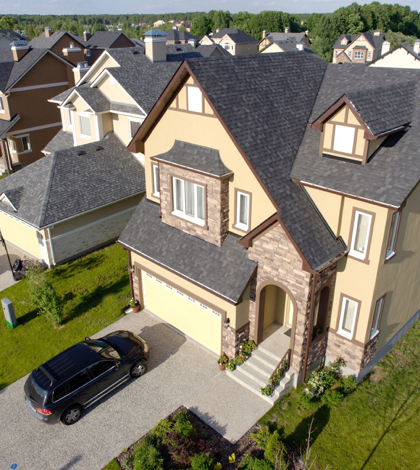There aren’t houses to meet demand, but a close look at the market shows much to be optimistic about, according to a study.
If you want to buy a house in the Inland Empire, and you can afford one, now might be the ideal time to do so.
That’s the conclusion of “Housing in the Inland Empire: Where It’s Been and Where It’s Going,” a study issued last month by the UC Riverside School of Business Center for Economic Forecasting and Development.
The 12-page report takes a look at the housing market in Riverside and San Bernardino counties, 10 years after the worst economic slowdown since the Great Recession all but leveled the region’s housing industry.
Anyone with a cursory knowledge of the Inland housing market will recognize some of the study’s main conclusions.
Prices are too high because not enough houses are being built, construction isn’t keeping pace with the region’s job growth and the market – despite building solid momentum during the past five years or so – has yet to come back to where it was before the recession hit.
That’s the downside. The positive side of the Inland Empire housing market is considerable and is mostly going unnoticed, according to the report.
At the start of this year, building permits were on pace to top the number of permits issued in 2017. Home construction rose by one-fifth last year, as permits for both single family and multi-family units hit their highest level in 10 years, according to the report.
Demand for housing in the two-county region should remain high because of the “affordability advantage’’ it holds over Los Angeles, Orange and San Diego counties. At the end of last year, 43 percent of all Inland households could afford the median price of a home, compared with 26 percent in San Diego County, 25 percent in Los Angeles County and 21 percent in Orange County.
“With the exception of nominal housing prices, the housing market, structure of the economy and economic growth in the Inland Empire is nothing like it was a decade ago,” the report states. “The Inland Empire continues to serves as the affordability mecca for households willing to make tradeoff between commuting and housing.”
But the memory of the Great Recession and the damage it inflicted are still strong, causing some to ask when the next downturn will happen and, when it does, how long will it last?
Above all, they want to know if the Inland Empire is sitting on a housing bubble like it was 10 years ago, shortly before the bottom fell out of the market.
The answer is an emphatic no, according to one of the people who helped put the study together.
“There are two basic themes running through this report,” said Robert Kleinhenz, economist and executive director for the business center. “The first is that there aren’t enough houses being built, not only in the Inland Empire but all of California, but everyone knows that.
“The second is that 2018 is a good year to buy a house in the Inland Empire. Not many people are talking about that.”
One reason to be optimistic is that the local job market is performing well. The Inland Empire’s unemployment rate in April was 3.7 percent – 3.9 percent in Riverside County, 3.6 percent in San Bernardino County – the lowest rate ever recorded in the region.
Approximately 49,000 non-agricultural jobs were added during the previous 12 months in both counties, according to the state Employment Development Department.
“The job market is strong, and that means more millennials should start buying houses,” Kleinhenz said.
Also, more houses will be built in both counties this year, not enough to meet demand but enough to increase supply and make it easier for some people to buy. Finally, all of the rumors circulating about the Federal Reserve raising interest rates might help the housing market, not only locally but nationwide.
“It will get some people who are on the fence about buying a house to go out and buy one,” Kleinhenz said. “So all of those rumors could be good for the market. And interest rates will definitely go up because the economy is strong.”
More than anything, the report puts to rest any notion the Inland housing market is sitting on a bubble similar to the one that burst in 1991 and again in 2008.
“What caused the last crash was too many people with bad credit were getting home loans, but that’s not the case now,” Kleinhenz said. “There are too many restrictions in place for that to happen again. But the market isn’t going to stay like this forever. At least in the Inland Empire, 2018 might be the best year for awhile to buy a house.
“The market might not be this good a couple of years from now.”
Another local economist called the report an accurate assessment of the local housing market.
“I think it’s spot on,’ said Jay Prag, professor of economics and finance at the Drucker School of Management at Claremont Graduate University. “There are some downsides to the market right now – mortgage rates will go up because the Federal Reserve isn’t artificially keeping interest rates down anymore. But I have seen some construction. It’s limited, but it’s encouraging.”
 IE Business Daily Business news for the Inland Empire.
IE Business Daily Business news for the Inland Empire.


